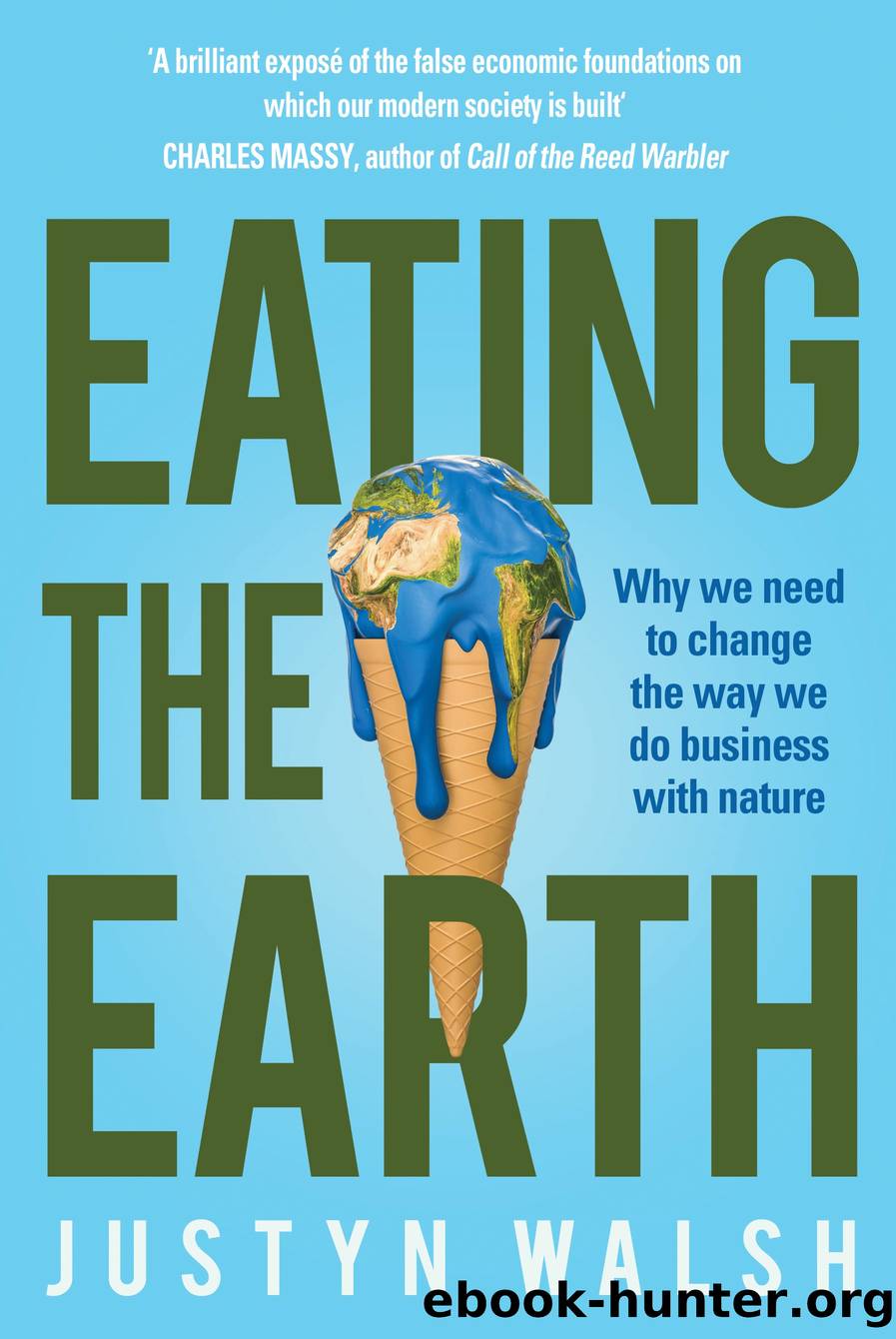Eating the Earth by Justyn Walsh

Author:Justyn Walsh
Language: eng
Format: epub
Published: 2023-08-11T01:55:45+00:00
Economies of scales
Rivers and other freshwater systems were the first aquatic environments to be severely impacted by human activity, with agriculture and deforestation eroding the soil and clouding nearby streams, while dams that drove watermills blocked the path of migratory species. In Europe, historically a heavy consumer of fish due to Christianityâs various proscriptions on eating red meat, the decline of freshwater ecosystems was evident as early as the eleventh century. Freshwater fish as a proportion of the total piscatorial diet fell from 80 per cent to 20 per cent over the course of that century, and in addition to being forced to new saltwater frontiers, there was an increase in freshwater aquaculture, with carp and other species raised in small ponds. Despite this pedigree, aquaculture has, however, only taken off over the course of the Great Acceleration, and mostly in marine environments â global aquaculture production comprised less than 10 per cent of the total seafood catch until the early 1980s, but now the quantity of farmed seafood exceeds that caught in the wild.
The âBlue Revolutionâ of the last four decades is in many ways a welcome development â because most fish are cold-blooded and less belaboured by gravity they tend to more efficiently convert feed to biomass; fish farms usually do not crowd out land-based areas; and the cultivation of some species, such as oysters and other bivalves, requires no external feed inputs, and these filter feeders improve surrounding water quality as well as facilitating carbon sequestration through shell building. But there are also downsides to aquaculture â some forms inflict significant unrecorded externalities on the wider world, not just through excessive antibiotic use and the destruction of ecosystems such as the clearing of mangrove forests, but also because huge quantities of smaller fish are required to raise the carnivorous species favoured by humans. In the Mediterranean for example, bluefin âranchingâ has become a major industry, but unlike most farmers these ranchers only reap, and do not sow â juvenile pre-spawning tuna are netted into cartable camera della mortes where they are fattened on a diet of wild-caught sardines. These âbaitfishâ are perfectly palatable and more wholesome than the bluefin itself, while high-metabolism tuna are extravagantly wasteful converters of feed to flesh, with around 20 kilograms of feedstock required to add a single kilogram to the farmed fish.
Given some of the problems arising from aquaculture production and the declining stock of wild fish, market-based solutions for wild-caught fish have been employed in an effort to combat the Tragedy of the Commons. The most common market regulation has been âIndividual Transferable Quotasâ, which is essentially a form of enclosure imposed on part of the marine commons. Species-specific ITQs utilise the fishing equivalent of a cap-and-trade mechanism to regulate fishing effort â quotas can be bought, sold or leased, and are designed to promote the conservation of the stock of a particular species by providing a long-term right to fish certain stocks. Rather than property rights accruing only at the
Download
This site does not store any files on its server. We only index and link to content provided by other sites. Please contact the content providers to delete copyright contents if any and email us, we'll remove relevant links or contents immediately.
Man-made Catastrophes and Risk Information Concealment by Dmitry Chernov & Didier Sornette(4763)
The Revenge of Geography: What the Map Tells Us About Coming Conflicts and the Battle Against Fate by Kaplan Robert D(3608)
Zero Waste Home by Bea Johnson(3303)
COSMOS by Carl Sagan(2966)
In a Sunburned Country by Bill Bryson(2959)
Good by S. Walden(2926)
The Fate of Rome: Climate, Disease, and the End of an Empire (The Princeton History of the Ancient World) by Kyle Harper(2446)
Camino Island by John Grisham(2397)
A Wilder Time by William E. Glassley(2369)
Organic Mushroom Farming and Mycoremediation by Tradd Cotter(2316)
Human Dynamics Research in Smart and Connected Communities by Shih-Lung Shaw & Daniel Sui(2184)
The Ogre by Doug Scott(2126)
Energy Myths and Realities by Vaclav Smil(2074)
The Traveler's Gift by Andy Andrews(2022)
Inside the Middle East by Avi Melamed(1948)
Birds of New Guinea by Pratt Thane K.; Beehler Bruce M.; Anderton John C(1919)
Ultimate Navigation Manual by Lyle Brotherton(1773)
A History of Warfare by John Keegan(1726)
And the Band Played On by Randy Shilts(1629)
